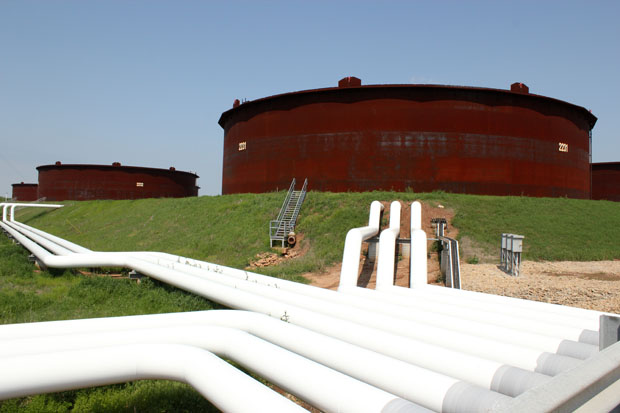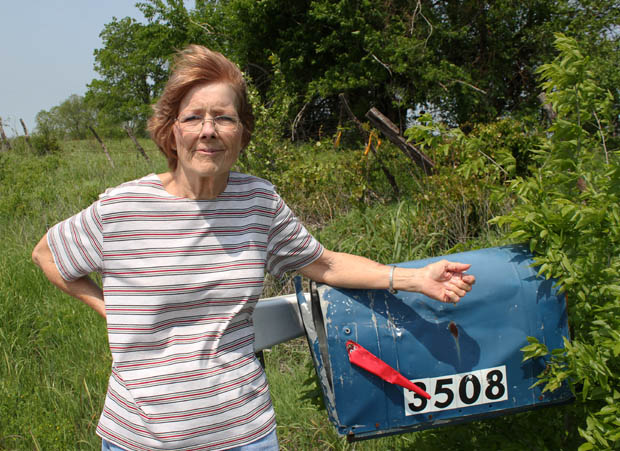With Keystone Pipeline Online, Analysts Expect it to Help Bust Oklahoma’s Oil Glut
-
Joe Wertz

Joe Wertz / StateImpact Oklahoma
A worker inspects a segment of the Keystone Pipeline before it's lowered into a trench near Stroud, Okla.
The Obama administration still hasn’t decided whether to move forward with the northern leg of the Keystone XL pipeline, which has been stuck in environmental impact study limbo for almost two years.
But but the southernmost section of the controversial pipeline, which put Oklahoma in the middle of a debate about energy, environment and economics, is now operational.
TransCanada started pumping crude oil from Oklahoma to customers in Texas on January 22. When the $2.3 billion pipeline reaches full capacity, 800,000 barrels of crude oil per day will flow to refineries along Texas’ Gulf Coast.
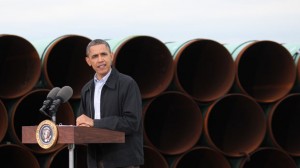
Joe Wertz / StateImpact Oklahoma
President Barack Obama speaking in Cushing, Oklahoma in March 2012.
Pipeline Politics
In March 2012, President Barack Obama traveled to a muddy Oklahoma pipe yard and pledged to fast-track the southern section of TransCanada’s Keystone XL pipeline.
“I’ve come to Cushing, an oil town, because producing more oil and gas here at home has been, and will continue to be, a critical part of an all-of-the-above energy strategy,” Obama told the crowd.
It was an easy promise for Obama to make because the 485-mile Oklahoma-to-Texas segment, known as the Keystone Gulf, didn’t need presidential approval. But the northern section of the proposed pipeline project, which would bring oil from tar sands in Alberta, Canada, through Oklahoma on its way to Texas, did.
The president rejected TransCanada’s permit in January 2012. The northern portion of Keystone XL has been in environmental impact study limbo since. U.S. Secretary of State John Kerry met with Canada’s Foreign Minister in mid-January, and said no decision had been made.
“We are currently engaged in the Environmental Impact Statement analysis,” Kerry told reporters. “An analysis will be made with respect to the national interests ultimately, and we’re just not at that point yet. I haven’t received it. They haven’t finished it.”
Busting the Glut
Approval of the northern Keystone XL segment would be good for Oklahoma oil companies that drill in the Northern Plains. Oklahoma’s Continental Resources, for example, is one of the top drillers in North Dakota’s Bakken Shale, and would benefit from the cheap, reliable oil transportation the pipeline would provide.
Right now, much of the oil produced in North Dakota is being exported by rail, a process now under scrutiny after a series of explosive — and sometimes deadly — train accidents.
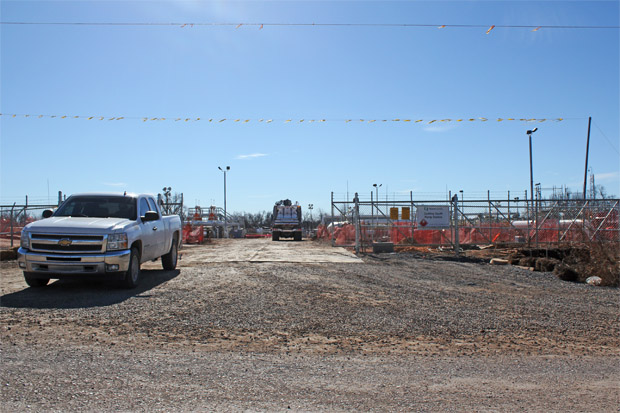
Joe Wertz / StateImpact Oklahoma
The Keystone Gulf pipeline starts at TransCanada's terminal in Cushing, Okla., and carries crude oil 485 miles south to refineries near Port Arthur, Texas.
But the Keystone Gulf connection alone will go a long way to help Oklahoma’s energy-fueled economy, which centers on the Cushing.
Right now, the oil hub is busy. Massive new tanks are erected continuously, and the terminal where the Keystone Gulf pipeline starts is bustling with construction crews. TransCanada’s president of energy and oil pipelines, Alex Pourbaix, spoke to reporters shortly after the southern section went into service.
“Growing energy production in Oklahoma, Texas, North Dakota, Montana and Canada have created a giant glut in places like Cushing, Oklahoma. And Gulf Coast refiners couldn’t access lower cost domestic production and were forced to pay a premium to ship crude from foreign suppliers.”
The glut of crude at the Cushing oil hub has hurt the price of Oklahoma oil, known as West Texas Intermediate. The Keystone Gulf section will make a major dent in the bottleneck, says Andy Lipow, president of Lipow Oil Associates, an energy-market consulting firm in Houston,
“This pipeline in conjunction with the Plains Mississippian pipeline, the Glass Mountain Pipeline, and a number of others, will allow producers in this area to ramp up their drilling and production,” says Lipow, who believes energy companies in Oklahoma have delayed drilling in anticipation of the new pipeline.
More oil production means more money for Oklahoma, which is currently the No. 5 most oil-producing state in the country. Right now, Oklahoma has more active rigs than any other state except Texas, data from Baker Hughes show.
Freeing up the Cushing bottleneck will be good for Oklahoma, but pipelines are just part of the national energy equation. Lipow and other analysts say the U.S. doesn’t have enough oil refineries. So this new pipeline might just be helping Oklahoma give its glut to Texas.
Pipelines are considered the safest way to transport crude oil, but pipeline accidents like the massive spill in Kalamazoo, Michigan, do occur. And the success of the Keystone Gulf segment could impact public perception of the project, and play a role in whether the northern section is approved.
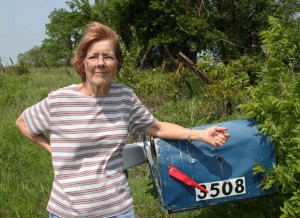
Joe Wertz / StateImpact Oklahoma
Sue Kelso stands halfway between her property line and her neighbor's, where the TransCanada's pipeline was moved. The yellow ribbons over her shoulder mark the pipeline's path, she says.
Keystone has many opponents who are concerned about the safety and environmental impact of the pipeline. Sue Kelso from southeastern Oklahoma, for example, won a fight with TransCanada to move the pipeline off her land in southern Oklahoma.
In north Texas, Julia Trigg Crawford unsuccessfully fought TransCanada’s use of eminent domain to bury the pipeline on her farm, and has vowed to monitor the southern section closely, StateImpact Texas’ Mose Buchele reports.
“We’ve got the Texas Pipeline Watch, a website, we’ve got a Facebook page. We are going to be out there with every means of technology and boots on the ground to watch this stuff,” Crawford says. “Because if you follow what happens a lot of times with unfortunate pipeline spills, it’s the landowners that find these things.”

